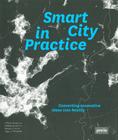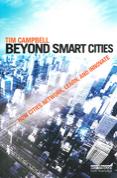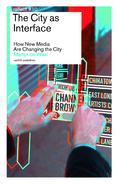public art Cohesion industrial sites urban theory tourism digitalization maps urbanism waterfronts & harbors giornata di studi inu networks sprawl spatial planning mobility outskirts & suburbs cities innovation governance strategic planning creativity open position European policies scenarios simulation collaborative urban design
Smart City in Practice
Converting Innovative Ideas into Reality
Lena Hatzelhoffer, Kathrin Humboldt,
Michael Lobeck, Claus-Christian Wiegandt (edited by)
Smart Cities are being discussed all around the world. Information and communication technology is being implemented to contribute to solving current and future social challenges within cities.
This book shows how a Smart City was actually developed over five years, as a Public-Private Partnership between Deutsche Telekom and the city of Friedrichshafen. The aim of the project was to enhance the quality of life of the citizens, to increase the locational advantages for businesses and to raise the level of interconnection in the urban society.
The idea was put into practice over a five-year period and was accompanied by social-scientific research. The authors reveal the impact and purpose of the project, which provides a concrete contribution to the worldwide debate about Smart Cities.
CONTENTS
ENTER
• Enter Smart Cities
DEVELOP
• Global challenges - cities get smarter
• Unclear concept - smart what?
• Various fields of action - a cross-section of smart spheres
• Practical approaches - projects and rankings
• Spatial context - integration and new building
• Participants - the state, cities, and businesses
• A new start - Germany goes smart
• Smart City in practice - T-City Friedrichshafen
ISTALL
• Converting ideas into reality -
grand visions and manageable work packages
• The city of Friedrichshafen - a small city at Lake Constance
• Deutsche Telekom - a large global corporation
• Broadband infrastructure - landlines and mobile communications
• Public Private Partnership - the basic rules of cooperation
• Projects in practice - solutions for everyday life
• Complexity - the limits of controllability
• Idiosyncrasies - unique features of Friedrichshafen
• Heterogeneity and dynamics - challenges for Deutsche Telekom
• Public relations - do good and talk about it
OPEN
• Everyday life - new possibilities and new limitations
• Urban society - the interplay of urbanity and virtuality
• Information and communication - what’s new?
• The Digital Divide - gaps are opening up
• Always on - global on location
• Networking - the invisible city
• T-City - what does it have in store for us?
• Participation - a difficult process
• Advantages and usefulness - a matter of perspective
AVOID CRASH
• Avoiding crash - dealing with concerns
• Project partners - differing objectives and cultures
• About trust in the system and concerns -
are the technologies harmless?
• Mobile communications and WLAN -
“They are bringing radiation directly into the home …”
• Data protection -
“Where did they get my address?”
• Data security - “Oops! Your data could not be uploaded”
• Attitudes towards information and communication technology -
taking concerns seriously
UPDATE
• Taking chances - learning from experience
• In a nutshell - summary
• Finding balance -
considering the local context and adapting to the world
• Visions and individual projects - both are needed
• Innovations through PPP -
using what is familiar and making changes possible
• Focusing on concrete applications -
necessary for fostering enthusiasm
• In conclusion
APPENDIX
Glossary
Literature
Picture credits
Acknowledgements
Imprint
CONTRIBUTING AUTHORS (Among others)
Citizens become pioneers
by René Obermann
T-City Futurists sum up their experiences
by Hans-Joachim Bachmann
Smart Meters - a new contribution to saving electricity
by Sebastian Gölz
Urbanity 2.0
About the development of the urban in the age of increasing virtuality
by Stefan Schmitz




Planum
The Journal of Urbanism
ISSN 1723-0993
owned by
Istituto Nazionale di Urbanistica
published by
Planum Association
ISSN 1723-0993 | Registered at Court of Rome 4/12/2001, num. 514/2001
Web site realized by ChannelWeb & Planum Association | Powered by BEdita 3






